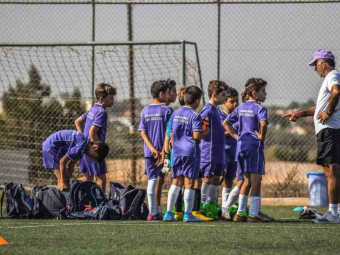The Disobedient Writer Break The Rules And Free Your Story
Tags: Fiction Writing
A guide to taking your fiction writing and memoir writing beyond the same old formula and telling unforgettable stories
Last updated 2022-01-10 | 4.6
- Re-evaluate conventional rules and approaches and decide if they are right for you and your writing- Get un-stuck and generate lots of new writing with the help of the fertile writing explorations that accompany each unit
- Discover alternative tools and approaches to expand your creative power and language
- and ultimately help you discover the form of your story that gives it the space to fully develop
What you'll learn
* Requirements
* This course is open to writers of memoir and fiction at all levels of experience* A willingness to put in the work and participate in the writing explorations
* An interest in literature across the genres
Description
“Write what you know!" “Find your voice!” “Show, don't tell!”
Rules and conventions are pervasive in fiction writing, and whether we are aware of it or not, they shape the way we approach and write our stories. This course aims to free you from the tyranny of the rules and offer a solid foundation of techniques, or roads into writing, that expand your understanding of the workings of creativity, language and story, and help you discover and bring forward your own best work.
Break the rules that limit your creativity and bring forward what you have always wanted to write
Re-evaluate conventional rules and approaches and decide if they are right for you and your writing
Discover alternative tools and approaches to expand your creative power and language, and ultimately help you discover the form of your story that gives it the space to fully develop
Get un-stuck, beat writer's block, and generate lots of new writing with the help of the fertile writing explorations that accompany each unit
Challenge conventional writing rules and discover effective approaches to bring forth your most creative and surprising work
This course is the fruit of working with thousands of writing students at all levels. I’ve seen them paralyzed by how they think they’re supposed to write, judging their own work so harshly according to conventional rules that they fail to notice the gold in it. They fail to notice that they are doing something different, even unique, and instead throw away work that with some development could be mindblowing! Exquisite! And true to their deeper goals in writing.
In all my teaching, I have found my students to be immensely more creative, and immensely better writers, than they understand themselves to be. What they came to create in writing was way beyond what they had imagined. And I believe, that if you are willing to put in the work, this course can do the same for you.
Course structure
Together we’ll look at twelve writing rules and conventions that are generally accepted by many, though certainly not all, writers, and continue to be taught as the way. We’ll look at each of these rules in turn.
At first, we’ll shake up those conventions, explore a bit of why they have been embraced, and consider what damage they may do to writers, their characters, and their stories.
Then, we’ll look at a tool or technique for writing beyond this convention in order to deepen your writing and unlock your real creative gifts.
We’ll finish each unit with a practical exploration to illuminate for you - or familiarize you with - each creativity tool which you can apply immediately to your own writing.
During this journey, we’ll use plenty of examples from literature around the world, by authors such as Toni Morrison, Michael Ondaatje, Zadie Smith and Pablo Neruda.
You’ll be leaving this course with effective approaches to bring forth your most creative and surprising work.
Detailed overview
Here is what we will cover in regards to each of the rules:
1. “Write what you know”
How sticking to “writing what you know” can block your creativity and limit your writing by deflating the power of your imagination. How to use the process of association in your writing, a valuable tool which can fuel your imagination and the expressiveness of your language.
2. “Find your voice”
Why “finding your voice” is sound, yet incomplete advice. How working with multiple voices and viewpoints can help you write complex stories.
3. "The more details, the better"
The importance of narration and point of view in shaping details. How the concept of microscopic truthfulness can help you use details more effectively.
4. “Write from a sense of place”
Why the instruction to “write from a sense of place” does not apply to all writers and all stories. How to expand this instruction in order to open your work to the complexity of an unconventional sense of place.
5. “Outline”
Why discovery can be preferable to, and should precede, planning. How to use a story map as a tool to allow for more discovery and creativity in the journey of writing your story.
6. “Deepen character through backstory”
Why backstory is a crucial yet insufficient aspect of full and complex characterization. How to tap into the concept of “the unlived life” in order to create unforgettable and moving characters.
7. “A story consists of five parts with rising and falling tension”
The origins of the five-part story form and why it is time to move beyond this prototype. How to change the shape of your story by exploring the stories often left unexplored.
8. “Start by setting the scene”
The drawbacks to revealing too much too soon when beginning a story. Alternative ways of crafting a story beginning that allows for mystery and discovery.
9. “All events lead up to the climax.”
Why every story doesn’t have to be built on the rising and falling of tension. How to discover different shapes of story and its tension in your own experiences and those of others.
10. “A causes B, then B causes C, …”
The difference between simple and complex causality. How to use concentric circles as a tool to create multidimensional characters and events.
11. “Use flashbacks sparingly”
The limits of a mostly chronological unfolding of story. How to tap into associational thinking to open up your language to move your story around in time.
12. “Every story has already been told”
Why it is not true that “every story has already been told” and why yours is a story worth telling.
+ A bonus lecture on "Show, don't tell"
Why "show, don't tell" is not a rule set in stone and why sometimes telling can be preferable to showing.
Who this course is for:
- You are looking to deepen story, characterization and language
- You feel blocked, unsure of your writing and unable to access your full creativity, and the full story waiting to be written
- You are open to having your ideas about writing - and telling story - challenged, and want to learn from new and useful approaches to writing that are perhaps unlike your own
Course content
14 sections • 39 lectures
What about the rules? Preview 04:22
In this introductory lecture, we look at why it is okay to break the rules. Towards the end of the video there's a brief section on how to get the most out of this course.
How this course is organized Preview 00:54
The rule: Write what you know Preview 05:57
We examine how this rule -”Write what you know!”- can block your creativity and limit your writing by deflating the power of your imagination.
How to break the rule: The power of association Preview 05:32
We explore ways of using the process of association in your writing, a valuable tool which can fuel your imagination and the expressiveness of your language.
Writing Exploration: Opening the door Preview 07:10
We look at how association is used in poems by Pablo Neruda and James Moore; and then try our hand at applying it to our own writing in the first writing exploration.
The rule: Find your voice Preview 04:47
We examine the ways in which “finding your voice” is sound advice, and the ways in which it is incomplete.
How to break the rule: A multitude of voices Preview 04:24
We explore how working with multiple voices and viewpoints can help you write complete and complex stories.
Writing exploration: One story, many voices Preview 04:34
In this writing exploration, we look at how the poem “The Triangle Fire” taps into multiple voices to tell a full, multifaceted story, and then apply the same technique to our own writing.
The rule: The more details, the better Preview 06:20
We examine the difference between details that shape the story and details that just add clutter.
How to break the rule: Microscopic truthfulness Preview 09:58
We look at the importance of narration and point of view in shaping details and how the concept of microscopic truthfulness can help you use details more effectively.
Writing exploration: The truth of an image Preview 07:35
We try our hand at a writing exploration inspired by advice by John Gardner. Then we explore the use of detail in Sharon Old’s poem “Photograph of a Girl” and embark on a second writing exploration using microscopic truthfulness.
Show, don't tell? Preview 10:42
We explore why "show, don't tell" is not a rule set in stone and why sometimes telling can be preferable to showing.
The rule: Write from a sense of place Preview 08:23
We examine why the instruction to “write from a sense of place” does not apply to all writers and all stories.
How to break the rule: Study the world Preview 04:04
We explore how to expand this instruction in order to open your work to the complexity of an unconventional sense of place.
Writing exploration: Multiple vision Preview 02:51
Inspired by the poem “Refugees” by Suzanne Gardinier, we try our hand at a writing exploration that goes beyond the idea of place as something solid and unified.
The rule: Outline Preview 03:58
We examine how outlining can turn creative work into drudgery by draining the joy and the excitement from the process of discovery and writing.
How to break the rule: The value of discovery Preview 07:34
We explore in what ways discovery can be preferable to, and should precede, planning.
Writing exploration: Try a map instead Preview 07:57
In this writing exploration, we look at an alternative way of organizing your writing by developing a map of your story.
The rule: Deepen character through backstory Preview 05:50
We examine why backstory is a crucial, yet insufficient, aspect of full and complex characterization.
How to break the rule: Writing the unlived life Preview 07:27
We look at how to expand the idea of backstory to include a look at the concept of “the unlived life” in order to create unforgettable and moving characters.
Writing exploration: On yearning Preview 04:25
In this writing exercise we explore the idea of yearning as a profound human emotion that can give real depth to your characters.
The rule: A story consists of five parts with rising and falling tension Preview 07:34
We scrutinize the origins of the five-part story form and make the case for why it is time to join those who have moved beyond this prototype.
How to break the rule: Expanding the world of your story Preview 04:09
We look at how moving away from conventional story form can benefit your writing.
Writing exploration: The story behind, the story below Preview 07:04
We try our hand at a writing exploration meant to illustrate how to change the shape of the narrative by exploring the stories that are often left unexplored.
The rule: Start by setting the scene Preview 07:56
We examine the drawbacks to formulaic set-up of story as the story’s beginning
How to break the rule: An unpredictable storm Preview 09:09
We explore alternative ways of crafting a story beginning that allows for mystery and discovery.
Writing exploration: The wandering narrator Preview 02:29
In this writing exploration we use our narrator’s point of view to expand and shape a different kind of story beginning.
The rule: All events lead up to the climax Preview 10:05
We examine why every story doesn’t have to be built on the conventional rising and falling of tension, or have to end in catharsis.
How to break the rule: The many shapes of story Preview 03:30
We look at how to discover different shapes of story and its tension in your own experiences and those of others.
Writing exploration: The many shapes of tension Preview 04:27
In this writing exploration we play around with different shapes of story and its tension.
The rule: A causes B, then B causes C, ... Preview 11:17
We examine why we shouldn’t approach complex situations with simple explanations and look at the difference between simple and complex causality.
How to break the rule: Concentric circles Preview 06:42
We look at how to use concentric circles as a tool to create multidimensional characters and events.
Writing exploration: Larger and larger circles Preview 07:24
Inspired by the poem “You Can Have It” by Philip Levine, this week’s writing exploration has you use concentric circles and an image of your choosing, to gather context and complexity as you write.
The rule: Use flashbacks sparingly Preview 06:09
We examine the limits of a mostly chronological unfolding of story.
How to break the rule: The associative dimension of language Preview 14:41
We explore at length how to tap into associational thinking to open up your language and move your story around in time.
Writing exploration: The path of the spider Preview 05:58
We look at the power of associative thinking at work in Nigerian writer Ben Okri’s novel The Famished Road, and then try our hand at applying the associative process in this week’s writing exploration.
The rule: Every story has already been told Preview 06:14
We briefly examine how the truism that "every story has already been told" is anything but true.
How to break the rule: Tell your stories Preview 01:51
Why yours is a story worth telling, valuable as your own, and as part of the global literature coming forward that undoes the validity of this writing truism.
Writing exploration: An infinite field Preview 02:01
This last writing exploration challenges you to bring together what you have gathered in this course to go and write the story you have been wanting to write.








 This course includes:
This course includes:
![Flutter & Dart - The Complete Guide [2022 Edition]](https://img-c.udemycdn.com/course/100x100/1708340_7108_5.jpg)














